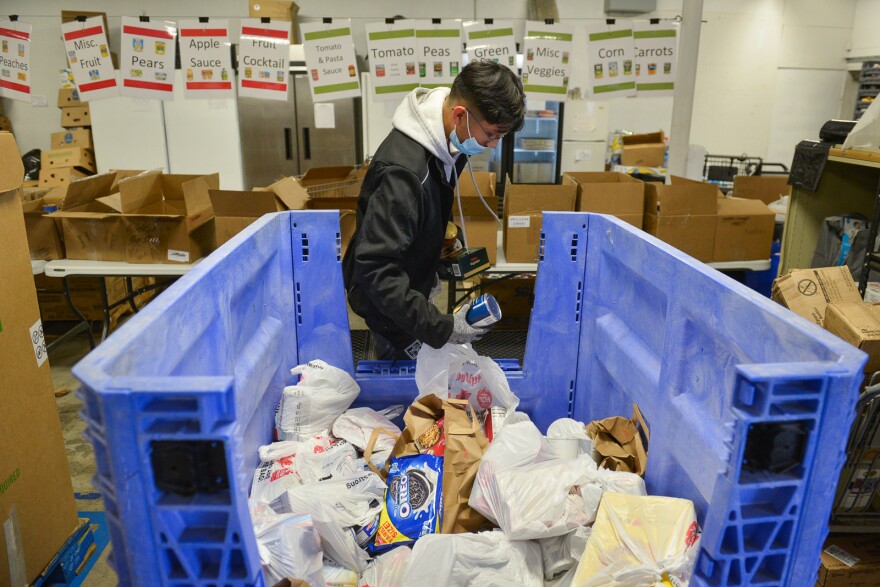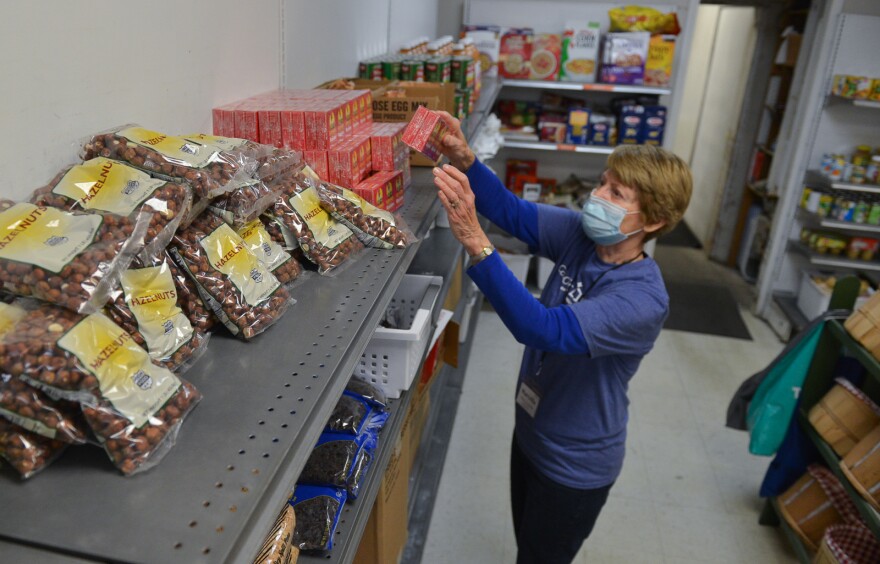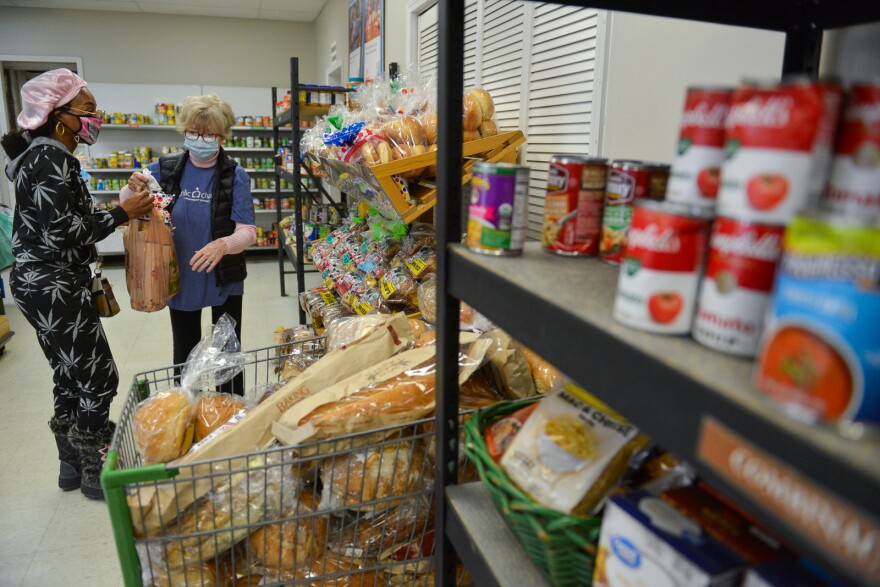The high cost of food nationally has kept Kansas City area food banks busy this holiday season.
“Typically we would have families use the pantry about three times per month,” said Mary Esselman, the CEO of Operation Breakthrough. “We're seeing families that are maybe using it even more than that, four times a month, some, some, even several times a week.”
Esselman said the driving factors are high prices for staples and fuel.
“It's harder to stretch your dollar right now with items such as gas and dairy and meat a little bit higher,” she said.
Denise Ogilvy, the chief mission officer for Catholic Charities of Northeast Kansas, said her organization has also seen higher numbers of people seeking food compared to last year.
“One of the things we have started to see is an increase in people coming through the door, also an increase in first-time pantry goers or new people to our pantries,” Ogilvy said.
Still, representatives from food banks said they’ve been able to keep up.

Ogilvy said donations of money and food have been consistent throughout the year.
If anything, she said, what they need more of is volunteers.
“We went from having 1,800 volunteers a month to 300 volunteers in a month when the pandemic hit, and it's been very slow to grow that back,” she said.
Ogilvy and others at food pantries across the metro stressed that the factors drawing more individuals and families to their services won’t end when the holidays are over.
Brittany Patton, who was rolling out of Hope Distribution Center on Wednesday with a cart stuffed full of pantry items, said she has been out of work due to an injury, so her husband is the sole provider right now.
“Meat prices have risen and here they help out with a couple of things that for me and him would last a couple of weeks,” she said. “And they help out with the other food groups like bread and stuff.”
She said Thanksgiving would be difficult without the support of the food pantry.
“It helps because we have a big family on both sides,” Patton said.
Harvesters Community Network, the regional food bank that supplies most of the metro's food pantries, has not had serious supply chain problems, said. Communications Manager Gene Hallinan.
She said they’ve been able to keep up with need, but she knows pantries are facing a high demand.

“This past year has been really hectic. They’ve all seen a 40% increase across the board of people asking for help,” Hallinan said.
She said the agencies are well versed in predicting their needs. And many pantries have returned to client-choice shopping instead of pre-packaged kits they were offering last year during the pandemic. This means the clients are allowed to shop in-person inside the pantries, which has also helped move food more efficiently to clients.
Hallinan said Harvesters has run fairly smoothly this season. They’ve had fewer volunteers but have been able to cover those gaps with their own staffers. Harvesters has also been receiving generous donations and supplies from their different sources, she said.
However, Hallinan said, the public shouldn’t stop donating or relax its giving mood.
Hallinan cited a report from Feeding America that estimates it will be at least two more years before families get back to where they were before the pandemic began.
“There’s still such a demand,” she says. “Hunger has no season.”







